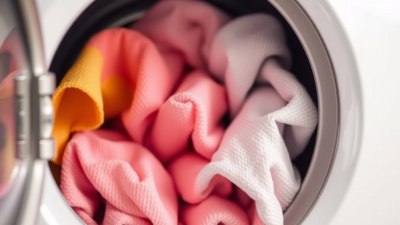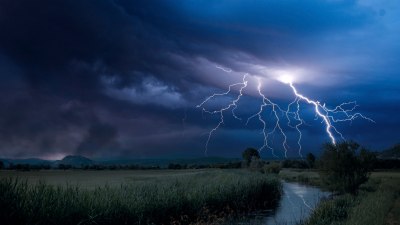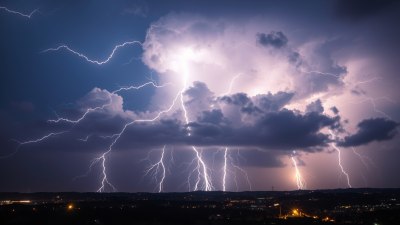Why Dryer Sheets Might Be Fighting a Silent War Against Atmospheric Pressure
Explore how dryer sheets interact with atmospheric pressure and their surprising role in your laundry routine.

Image created with Flux Schnell
Dryer sheets have long been a simple staple of the laundry process, prized for their ability to soften clothes, reduce static cling, and infuse fabrics with pleasant scents. However, beneath their seemingly straightforward function lies a complex interaction with the environment that often goes unnoticed: the battle against atmospheric pressure. This subtle yet significant influence of atmospheric pressure on how dryer sheets work can help us better understand the mechanics behind our laundry routines and highlight the importance of environmental factors often overlooked.
Understanding Dryer Sheets and Their Composition
At their core, dryer sheets are thin sheets of fabric or paper coated with fabric softeners, anti-static agents, fragrance, and other chemicals that activate when subjected to heat and tumbling action inside a clothes dryer. The primary components in these sheets are typically cationic surfactants and lubricants, which, when transferred to clothes, reduce friction between fibers and minimize static charges that cause cling.
These sheets are designed to melt their coatings gradually during the drying process, releasing their active agents onto fabrics in a controlled manner. The heat and tumbling allow for even distribution of softening agents and help avoid residue buildup, leading to smooth, soft, and fragrant garments.
The Role Atmospheric Pressure Plays in the Drying Process
Atmospheric pressure, the weight exerted by the air around us, can fluctuate due to weather, altitude, and indoor conditions. At sea level, standard atmospheric pressure is approximately 101.3 kPa (kilopascals), but this changes as you move to higher elevations or experience changes in weather patterns. Though seemingly unrelated, these variations can subtly influence the drying process and the behavior of dryer sheets in significant ways.
The key lies in how atmospheric pressure affects the evaporation rate of moisture inside the dryer drum as well as the volatility of the chemicals coated on the dryer sheets. Lower atmospheric pressure reduces the boiling point of water and other liquids, causing moisture to evaporate faster. This process can alter how quickly the softening agents from dryer sheets are released and absorbed into fabrics.
Atmospheric Pressure and the Activation of Softeners
The softening agents in dryer sheets are designed to activate at specific temperatures within the dryer. As heat increases, the waxy coating on the sheets melts, releasing lubricants and surfactants that cling to fabrics and counteract static. However, atmospheric pressure governs the phase change behavior of these substances. Under lower pressure conditions, these compounds may vaporize sooner or disperse in the dryer atmosphere differently than under higher pressure.
This can mean that the softening agents either penetrate the fabric at varying rates or evaporate into the air, reducing their effectiveness. Conversely, higher atmospheric pressure can slow down evaporation, allowing more substantial transfer of softeners onto clothes. These changes can affect the texture, softness, and static resistance of laundry afterward.
Tumbling Dynamics and Air Pressure
The tumbling motion within the dryer generates mechanical agitation that helps distribute heat, move garments freely, and ensure even contact with dryer sheets. Air pressure within the drum also plays a crucial role in how fabrics interact with these sheets. The pressure differential inside and outside the drum influences airflow patterns, moisture removal, and fabric movement.
When atmospheric pressure drops, the internal drum air may expand slightly, changing how garments fall and rub against one another. This variation in tumbling dynamics may alter how effectively the dryer sheet coatings transfer onto the fibers. Air pressure also affects the dryer’s venting system efficiency, which is vital for removing moisture-laden air; ineffective venting due to atmospheric changes can cause higher relative humidity inside the drum, impacting drying time and the performance of dryer sheets.
Altitude's Impact on Dryer Sheet Performance
Certain regions with higher elevation, such as mountainous areas, experience lower atmospheric pressure constantly. This environment alters the drying process fundamentally. Dryers in high-altitude locations may take longer to remove moisture due to decreased air density and reduced convection efficiency. The associated changes in temperature and pressure can make dryer sheets less effective by causing premature volatilization of their active ingredients or uneven distribution across garments.
These factors may explain anecdotal reports from users living at altitude about dryer sheets seeming less potent or leaving residues when compared to sea-level use. Manufacturers sometimes adjust formulations to account for such environmental differences, but standard dryer sheets are generally created with moderate altitude conditions in mind.
Impact on Static Electricity and Fabric Behavior
Static cling results from electrical charges building up on materials, particularly when synthetic fabrics rub together in dry environments. Dryer sheets reduce this cling by depositing softening compounds that act as lubricants and neutralize electrical charges. The interaction between atmospheric pressure and static electricity is subtle but real; lower pressure and humidity levels tend to increase static buildup because dry air is a poor conductor of electricity.
Since atmospheric pressure influences humidity, regions or times when pressure is low often coincide with drier air, making static cling a bigger issue. Dryer sheets counter this effect by modifying fabric surfaces, but if atmospheric pressure alters the distribution and effectiveness of these compounds, the balance can shift. Users may notice varying performances of dryer sheets depending on environmental conditions.
The Chemistry Behind Dryer Sheets Under Different Pressure Conditions
Many fabric softeners in dryer sheets rely on quaternary ammonium compounds, which bind readily to negatively charged textile fibers. Their behavior depends on temperature, pressure, and humidity, all coordinated to maximize binding during drying. Changes in atmospheric pressure alter vapor pressure and molecular interactions, potentially affecting how chemicals adhere to fibrous surfaces.
Moreover, some fragrances and volatile agents formulated into dryer sheets can evaporate more quickly under low atmospheric pressure. This volatility means customers might experience a fainter scent after drying on lower-pressure days or locations. Conversely, higher pressure can help retain these fragrances longer during drying.
Studies and Experiments Demonstrating Pressure Effects
While limited direct research focuses exclusively on atmospheric pressure’s impact on dryer sheet efficacy, adjacent studies in textile science and drying technology support these observations. Experiments with drying fabrics at reduced pressure show altered moisture evaporation rates and chemical adhesion profiles. Industrial drying settings sometimes utilize controlled pressure environments to optimize product quality.
Laboratory tests comparing dryer sheet performance at varying altitudes reveal differences in fabric softness and residual static levels. These results underline the need to consider environmental variables in evaluating common household products.
Implications for Consumers and Manufacturers
For consumers, this means that dryer sheet performance may not be entirely consistent across different locations or weather conditions. Buying the same brand does not guarantee identical results if atmospheric pressure and humidity vary significantly. Users in high-altitude or low-pressure areas might experience less effective softening or more static cling and may need to adjust their laundry techniques, such as increasing drying time or using additional softening agents.
Manufacturers can leverage this knowledge by innovating dryer sheet formulas optimized for varying pressure environments. This could include adjusting wax melting points, modifying surfactant compositions, or incorporating pressure-stable fragrance compounds. Marketing strategies could also educate users about environmental influences and tailor recommendations accordingly.
Environmental and Future Considerations
Understanding how atmospheric pressure impacts dryer sheets also invites broader considerations about sustainability and energy efficiency. If dryers require longer cycles or additional products under certain atmospheric conditions, this can lead to increased energy consumption. Advancing dryer sheet technology to be more resilient across environmental variations could help minimize resource use and improve consumer satisfaction.
Future innovations might combine smart sensing technology with dryer systems to automatically adjust drying parameters based on atmospheric pressure and humidity, leading to optimal fabric care and performance. This fusion of environmental awareness with home appliance technology heralds a new era in laundry science.
Dryer sheets, seemingly simple household items, are in fact complex chemical systems performing under the subtle influence of atmospheric pressure. Recognizing this silent war against environmental forces enriches our appreciation of everyday products and highlights the nuanced interplay between chemistry, physics, and the environment.











